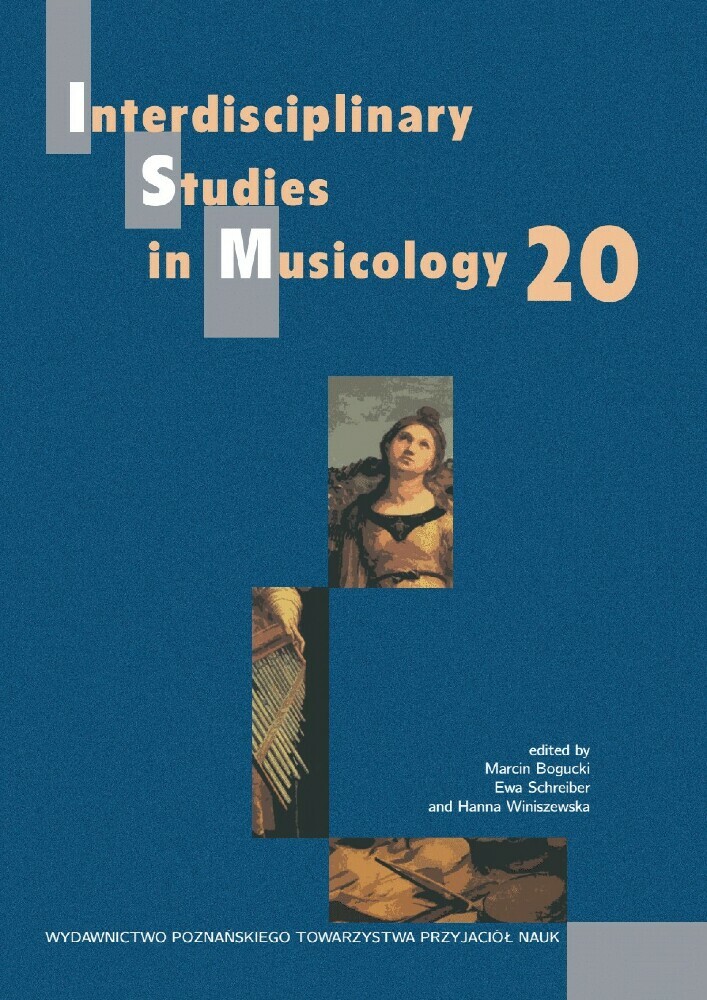Abstract
My aims are to investigate how the concept of narrative moment may be helpful in capturing the role of music in creating profound communication on the level of performing as well as listening to musical performance. I aim to show how sharing a culminating moment in a musical experience may lead to inducing a state of self awareness and confidence in place of critical separation and distrust. I discuss Lawrence Kramer’s idea of the narrative moment explained in original in reference to a literary example and an improvised music. It is presented as an example of communicative potential in music performance, which as I argue, is worth exploring and explaining further. Suggesting a possibility of narrative moment in the experience of musical performances offers a comprehensible and applicable vision of communicative potential of music that is far reaching even if rarely achieved; a possibility of communication that is direct and intuitive, flexible and affective. Defining musical meaning in terms of its music’s communicative power and far reaching social consequences suggests deep connections between the social/intersubjective, individual/subjective and aesthetic aspects of life. The proper explanation of the meaning of music requires drawing from different domains, including metaphors and highly persuasive literary and musical examples.
Funding
National Science Center
References
Baldwin, J. (2009). Bloomington: Indiana University Press. Sonny’s Blues. In S. Feinstein, D. Rife (Eds.). The Jazz Fiction Anthology (pp. 17–38).
Bernstein, S. G. (1974). James Baldwin ‘Sonny’s Blues’: A Message in Music. Negro American Literature Forum, 8(3): 231–233.
DeNora, T., & Ansdell, G. (2014). What Can’t Music Do?. Psychology of Well-Being: Theory, Research and Practice, 4(23): 1–10.
Ellison, R. W. (1995). Invisible Man. New York: Vintage Books. Ellison, R. W. (2002). Living with the Music. Ralph Ellison’s Jazz Writings, R. G. O’Meally (Ed.). New York: The Modern Library.
Golden, T. J. (2012). Epistemic Addiction: Reading ‘Sonny’s Blues’ with Levinas, Kierkegaard, and Nietzsche. The Journal of Speculative Philosophy, 26(3): 554–571.
Ihde, D. (2007). Listening and Voice. The Phenomenologies of Sound. Albany: State University of New York Press.
Iyer, V. (2004). Exploding the Narrative in Jazz Improvisation. In R. G. O’Meally, B. Hayes Edwards, F. J. Griffin (Eds.). Uptown Conversation: The New Jazz Studies (pp. 393–403). New York: Columbia University Press.
Iyer, V. (2006). Unlocking the Groove: Rhythm, Meter, and Musical Design in Electronic Dance Music. Journal of the Society of American Music, 2(02): 269–276.
Kramer L. (1995). Classical Music and Postmodern Knowledge. Berkeley: University of California Press.
Kramer, L. (1999), The Narrative Moment. Lenox Avenue: A Journal of Interarts Inquiry, 5: 59–62.
Kramer, L. (2002). Musical Meaning. Towards a Critical History. Berkeley: University of California Press.
Kramer, L. (2003). Musicology and Meaning. The Musical Times, 144(1883): 6–12.
Kramer, L. (2007). Why Classical Music Still Matters?. Berkeley: University of California Press.
Levinson, J. (1995). Messages in Art. Australasian Journal of Philosophy, 73(2): 184–198.
Jones, L. (1995). Blues People. The Negro Experience in America and the Music that Developed from it. New York: Payback Press.
Reilly, J. M. (1970). ‘Sonny’s Blues’: James Baldwin’s Image of Black Community. Negro American Literature Forum, 4(2): 56–60.
Sherard, T. (1998). Sonny’s Bebop: Baldwin’s ‘Blues Text’ as Intracultural Critique. African American Review, 32(4): 691–702.
Szyszkowska, M. A. (2017). Wsłuchując się w muzykę. Studium z fenomenologii słuchania [Listening into music. A study in the phenomenology of listening]. Warszawa: Wydawnictwo Naukowe Semper.
Szyszkowska, M. A. (2018). Musical Phenomenology: Artistic Traditions and Everyday Experience. Avant, 9(2): 141–155.
Szyszkowska, M. A. (2010), Messages in Art And Music: On Route to Understanding Music Works with Jerrold Levinson. Dialogue and Universalism, 3–4: 98–106.

